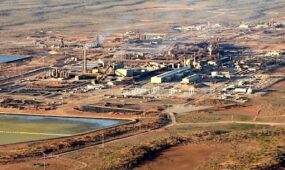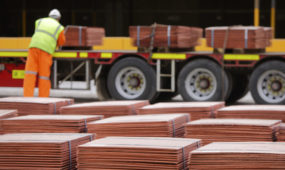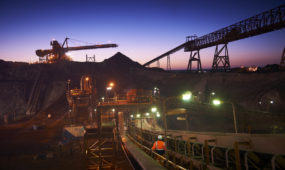Copper purification system to cut shipping costs
Mining & Resources
NEW technology to improve the purification process of minerals will allow a major Australian miner to significantly reduce shipping costs.

Sign up to receive notifications about new stories in this category.
Thank you for subscribing to story notifications.
South Australian company OZ Minerals has designed a refining process that allows it to increase the quality of its copper concentrate and exponentially reduce export costs.
OZ Minerals’ hydromet technology improves the leaching process and purifies copper concentrate by reducing the amount of iron.
Project Director at the company’s Carrapateena mine Brett Triffett said hydromet’s unique ability allowed it to significantly reduce the shipping weight, which would save the company tens of millions of dollars in export fees.
“We were planning on producing a product that was about 40 per cent copper and that product would be shipped to our customers in Asia and Europe and they would make that into something that was 100 per cent copper,” he said.
“It’s a leeching process. We take that 40 per cent product and use a combination of reagents to dissolve the iron out of the concentrate. It then upgrades it to the targeted 60 per cent.”
Copper remains a high demand mineral despite its drop in value over the past 12 months from 2.91 USD/LB to 2.07 USD/LB.
It is primarily used to make wires and bars that are essential in construction and industrial machinery manufacturing and is the world's third most widely used metal, after iron and aluminium.
The majority of mines around the world produce copper concentrations between 24 to 40 per cent.
Trifett said having a higher concentrate percentage not only increases its monetary value but also simplifies the smelting process.
“We have the potential to take this technology and apply it to our other operations in Australia and also other mines overseas as well,” he said.
“We hope it will give us a competitive advantage to develop projects that would not otherwise have been able to be developed at the moment because of the quality of their copper concentrate.
“This process is unique to us. We’ve done it to suit our concentrate and there is no one else in the world that’s doing anything like this.”
Triffett said OZ Minerals had a global growth aspiration and was looking to expand its export markets to include big copper manufacturers in Japan and Korea.
The company is currently engineering a plant and finalising costs to demonstrate the feasibility of the process.
Last month OZ Minerals was awarded the Statewide Super Innovation in Resources Award for its hydromet technology at the inaugural South Australian Resources Industry Awards.
The judging panel included the leader of the Minerals and Energy strand at the University of South Australia’s Future Industries Institute Bill Skinner who said hydromet would help transform the industry.
“There’s an added advantage to hydromet – when they target iron, other impurities come out along with it, uranium and others,” he said.
“Having any elevated level of radioactive material in the concentrate is not very good. Hydromet produces a more valuable concentrate, reduces the carbon footprint, and removes impurities for subsequent processing.
“The Southeast Asian market particularly is highly technological. There is copper in just about everything, computers, TVs, air conditioners. Most of the production of that is coming out of China, Taiwan and Southeast Asia. Having this technology does make South Australia a more attractive source.”
Australia has about 6 per cent of the world's economic copper resources and is ranked third after Chile (25 per cent) and the USA (16 per cent).
South Australia has almost 70 per cent of Australia’s copper resources and is home to a number of long-life deposits, including Olympic Dam, the fourth largest copper resource in the world.
Jump to next article



